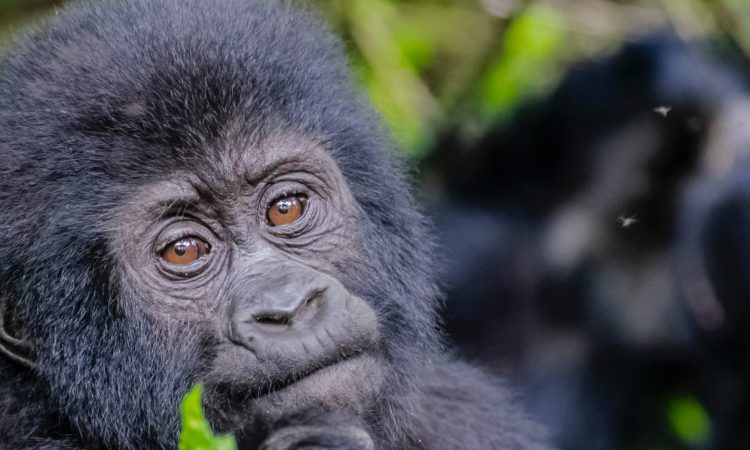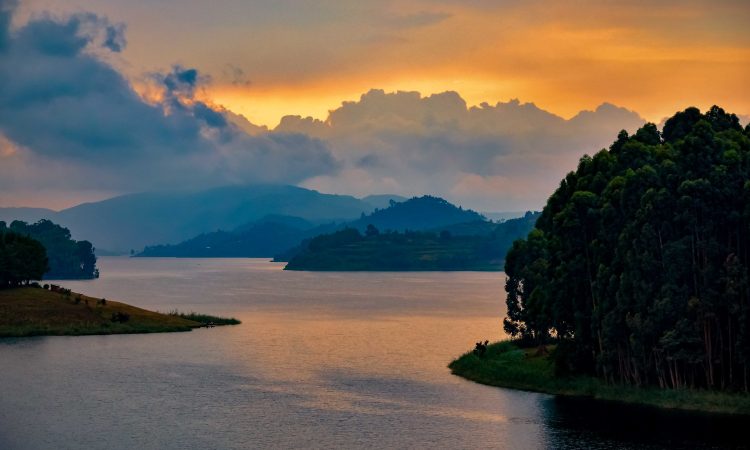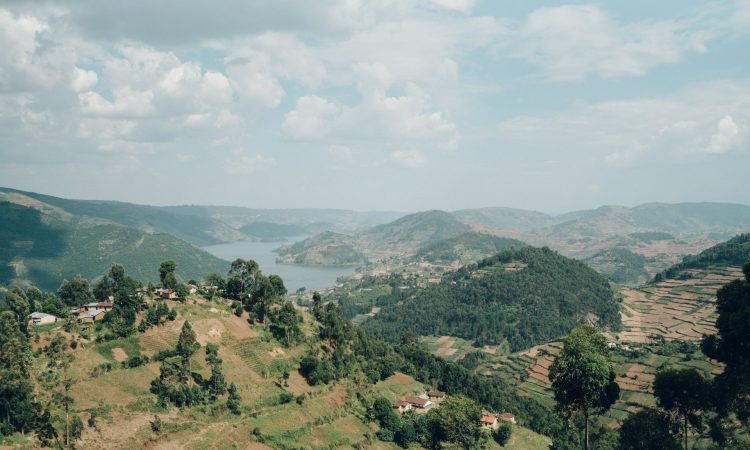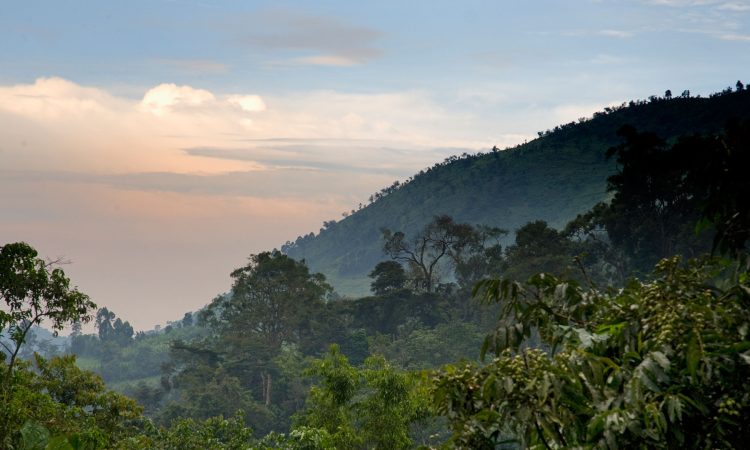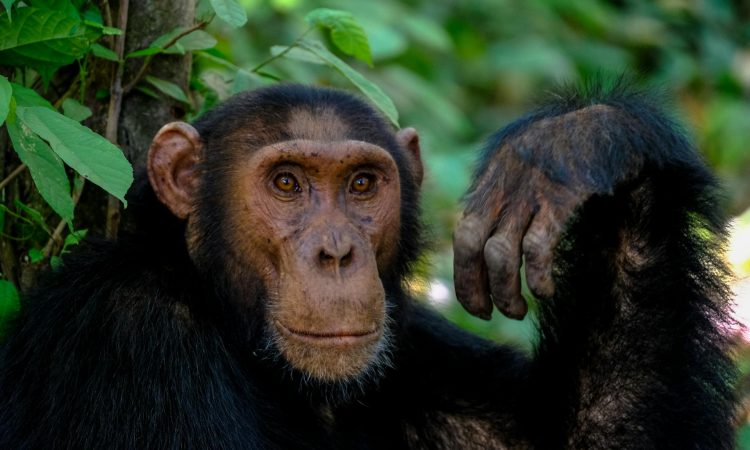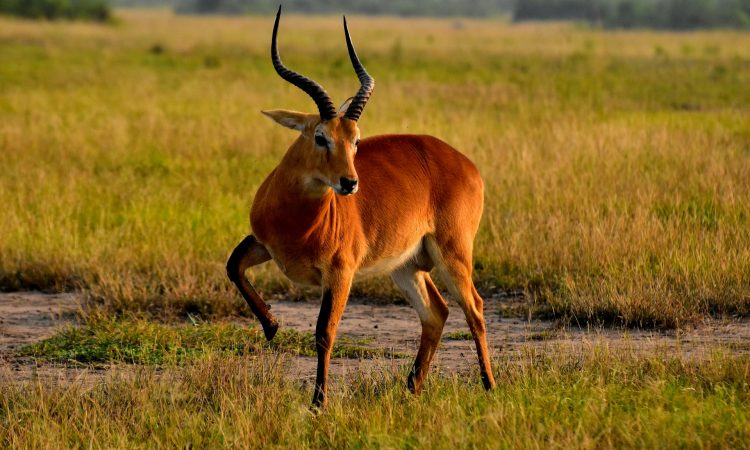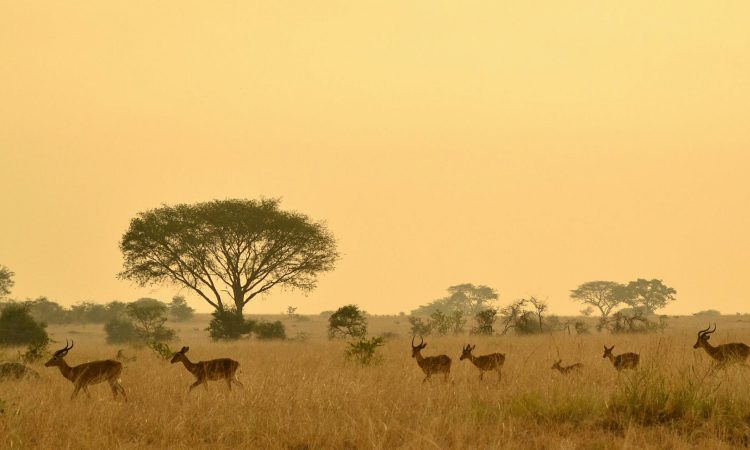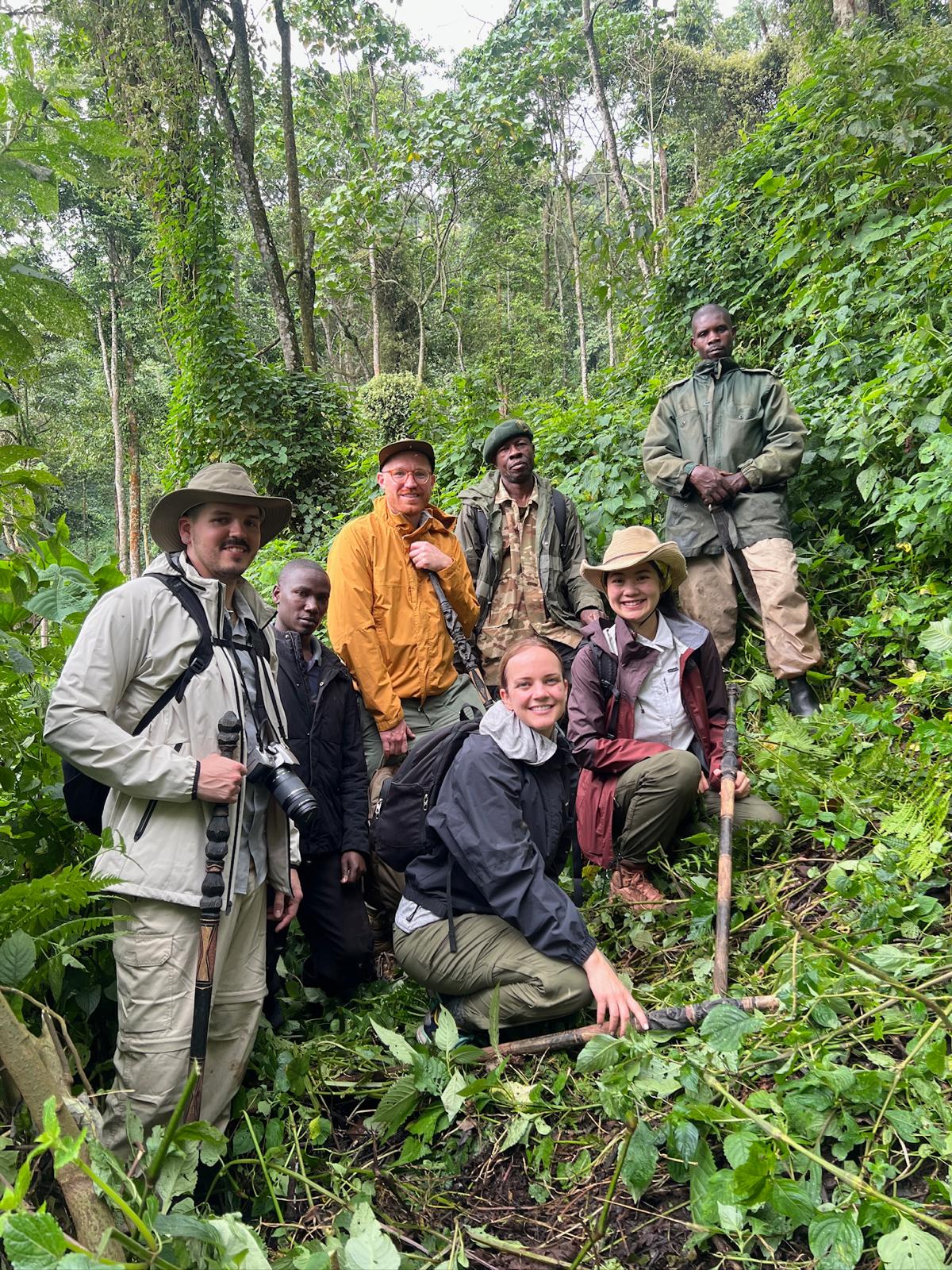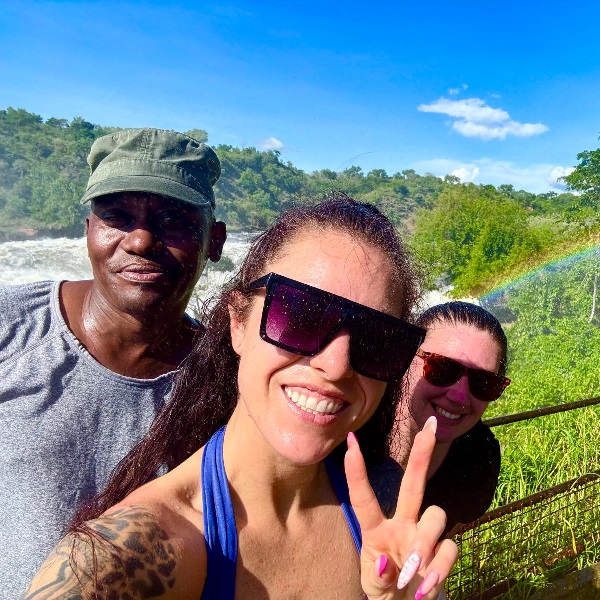Bwindi Impenetrable National Park has over 18 gorilla families and groups. Mountain gorillas are descendants of ancestral monkeys and apes found in Africa and the Arabian continents since the start of the Oligocene epoch (24-34 million years ago). They are one of the rare and critically endangered primate species in the world. It was 9 million years ago that this group of primates later evolved into gorillas, originating from common ancestors with humans and chimps. This is when the genus ‘gorillas’ emerged.
The most interesting and unique fact about gorillas is their behavioral resemblance to humans. They are highly social and live in groups of 2-40 individuals led by the silverback, the dominant male who serves as the leader and protector of the entire family. The silverback guides and defends the group from potential dangers, conflicts with other gorillas, and other wild animals.
The majority of male gorillas leave their birth groups at around 11 years old to either form their own group or challenge an established family and take over. The silverback leads the group to the best spots for feeding and resting throughout the year. A female gorilla typically gives birth for the first time at age 10 and then every four years.
Most importantly, mountain gorillas share up to 98% of human DNA and, like humans, can live up to 54 years. In Uganda, gorillas can be trekked in Bwindi Impenetrable National Park and Mgahinga Gorilla National Park, both located in the southwestern corner of the country on the border with DR Congo and Rwanda.
Bwindi National Park is divided into four distinct gorilla regions or sectors, each with individual families: Buhoma, Rushaga, Ruhija, and Nkuringo sectors.
Gorilla Families in Buhoma Sector

This sector is situated in the northern part of Bwindi National Park and was the first to receive tourists when gorilla trekking began in 1993. It remains the most visited sector year-round due to its accessibility and popularity. The families in this sector include:
- Mubare Family: This was the first group habituated in 1993. The Mubare gorilla family initially had 18 members but has since decreased in size due to deaths and migrations. It is now the smallest family in Bwindi NP, particularly after the death of its original silverback, Ruhondeza. Current members include Kanyonyi (the lead blackback), Muyambi, Malaika, and Kashundwe.
- Habinyanja Gorilla Family: The Habinyanja gorilla family has 20 members with 2 silverbacks. The name ‘Habinyanja’ comes from the local word for water, ‘Nyanja,’ reflecting the group’s initial discovery near a swamp. This group can be challenging to track due to its extensive movement across the forest. Prominent members include Maraya (blackback), late Mizayo (killed by poachers), Binyonko, Nyabuche, Nyamuhango, Rukundo, Kisho, Rugyendo (adult females), Kavuyo (sub-adult male), and Ruyombo (sub-adult female), Malaika, Hamusini, Makara, and Rwansigazi, among others.
- Rushegura Group Family: In 2000, the Rushegura gorilla family separated from the Habinyanja group with 20 members and 1 silverback named Kabukojo. This group is easier to track as it often roams near the park headquarters and occasionally visits nearby lodges. Other members include Mwirima, Kabukonjo, Kibade, Nyamunwa, Nyampazi, Ruterena, Kafuruka, Kibade, and Karungyi, among others.
- Katwe Family: The Katwe gorilla family is the newest addition to the gorilla families in the Buhoma sector. Established in 2018 after successful habituation by the Uganda Wildlife Authority, the Katwe family comprises 7 members, including one silverback (Silverback Katwe), four adult females, three blackbacks, and two infants. The exact number of members in the Katwe family fluctuates as new members occasionally join or leave the group.
Gorilla Families in Rushaga Sector
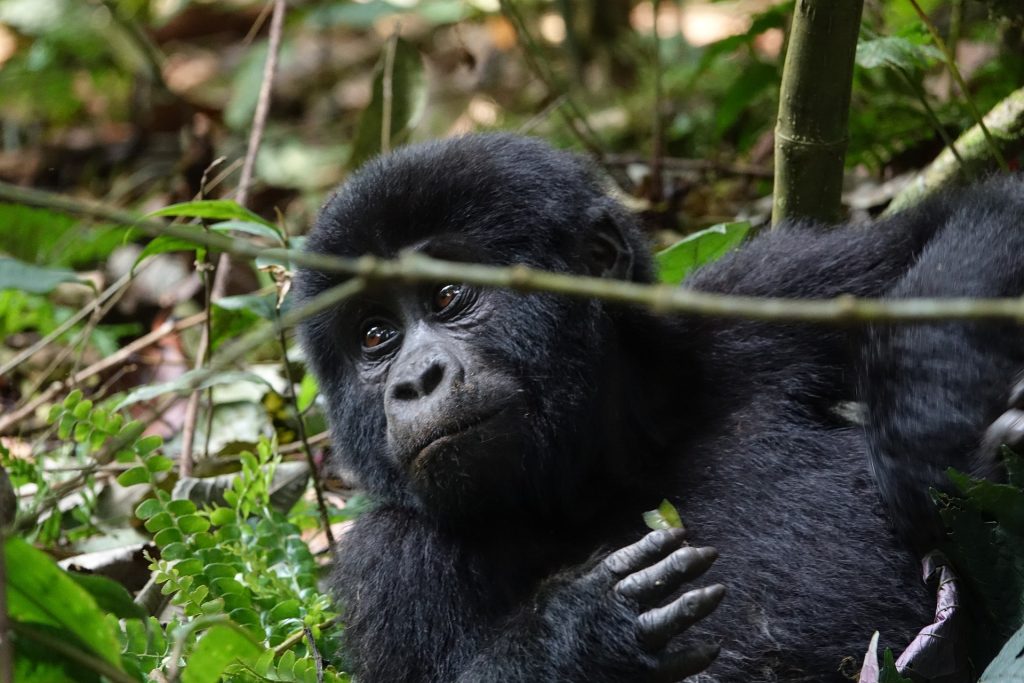
This sector is located in the southern part of Bwindi National Park between Rubanda and Kisoro Districts. It has the highest number of habituated families in the park, including:
- Nshongi Gorilla Group: The Nshongi gorilla family is named after a nearby river where the group was first sighted during habituation. It is the largest habituated gorilla family with 25 members and is led by 2 silverbacks. Members include Nshongi, Kakono, Bweza, Matama, Busasa, Bwire, Bukojo, Mahoro, among others.
- Mishaya Gorilla Group: The Mishaya gorilla family consists of 12 members and 1 silverback. It split from the Nshongi group in 2010 due to disputes between competing silverbacks. Members include Bakunzi, Mwiza, Rutaro, Mize, among others. Please note that Mishaya, the former leader after whom the group is named, has since passed away, and his son Mwine now leads the group.
- Kahungye Gorilla Group: The Kahungye gorilla family has over 13 members with the dominant silverback known as Rumansi. Officially launched in October 2011 after a successful two-year habituation process, this family was originally led by a subordinate silverback named Ruhemuka until his death in March 2013.
- Busingye Gorilla Family: The Busingye gorilla group split from the Kahungye gorilla group under the leadership of silverback Busingye (‘peace’). It has 9 members, including 3 infants, 5 blackbacks, and 1 silverback. Uganda Wildlife Authority is yet to release the names of all members in this family.
- Bweza Gorilla Group: The Bweza gorilla group split from the original Nshongi family due to internal rivalry and currently consists of approximately 12 members. Despite previous speculation by UWA that the group might reunite with Mishaya, it remains independent and open for tracking in the Rushaga area of Bwindi Impenetrable National Park.
Gorilla Groups in Ruhija Sector
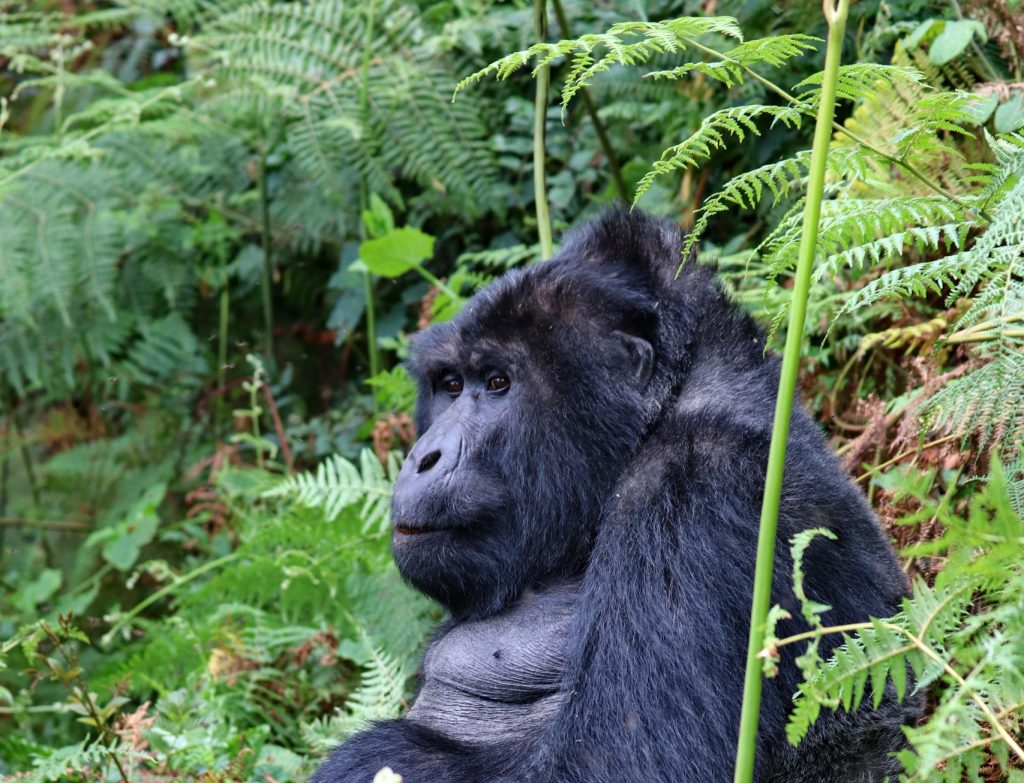
Ruhija is located in the eastern part of Bwindi Impenetrable National Park and can be accessed from Kabale, Buhoma, Kisoro, or Kigali. The sector has three gorilla families:
- Bitukura Gorilla Family: Bitukura gorilla family is known for its peaceful dynamics and was first habituated in 2017. With 13 members, including 4 silverbacks and the dominant silverback Nduhura, this family includes members such as Kakara, Twakire, Ruhara, Betina, Kadogo, Mugisha, and Obia, among others.
- Oruzogo Family Group: Oruzogo gorilla family is one of the newer families in Ruhija, with habituation beginning in 2009 and the family officially opening for tourists in 2011. It remains open year-round for visitors to the Ruhija sector with 16 members, including one silverback (Bakwate). Members include Birungi, Bucura, Otaka, Bwoba, Muteesi, Nyakiina, Kaganga, Katooto, Kanywani, Busungu, Kakobe, among others.
- Kyaguriro Gorilla Group: Kyaguriro gorilla family was first habituated in 1995 but was not visited by tourists at the time due to permit availability issues. The group, located deep in the jungles of Ruhija, consists of 15 members, including 2 silverbacks. Despite habituation, Kyaguriro Gorilla family is primarily reserved for research purposes and does not receive visitors for trekking tours.
Gorilla Families in Nkuringo Sector

Nkuringo is in the southern corner of the park in Kisoro District, near the border with DR Congo. Initially comprising only one gorilla family, Nkuringo recently welcomed a second group, Christmas, in 2018.
- Nkuringo Gorilla Group: Nkuringo gorilla family was the first to settle in this region and currently has 18 members and 2 silverbacks. This group is known for its challenging trekking terrain, requiring visitors to be physically fit. Members include Rafiki, Bahati, Karungi, Karibu, Kwesima, Magara, Muhozi, Kiiza, and Faraha, among others.
- Christmas Gorilla Group: The Christmas gorilla family is the most recent habituated group in Bwindi, alongside Katwe family in Buhoma. Led by silverback Christmas, this group split from the original Nkuringo group and currently consists of 9 members, including one silverback, three female gorillas, one blackback, and one infant. Please note that the group’s composition changes due to factors such as births, deaths, and migrations to other groups.


